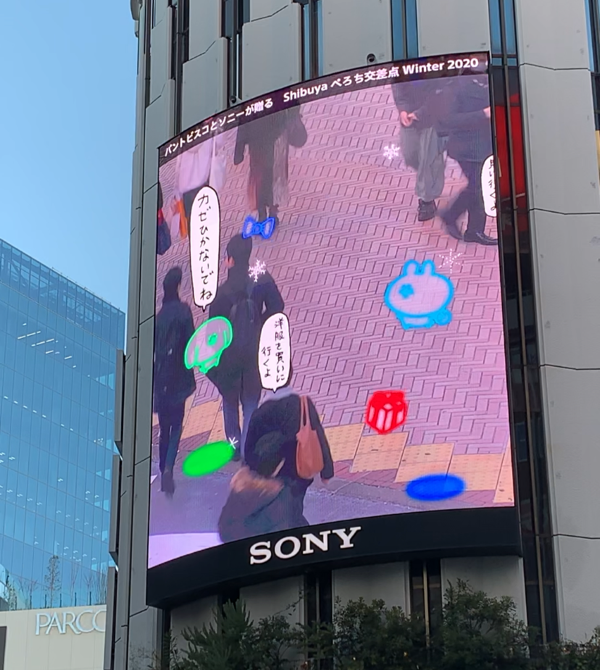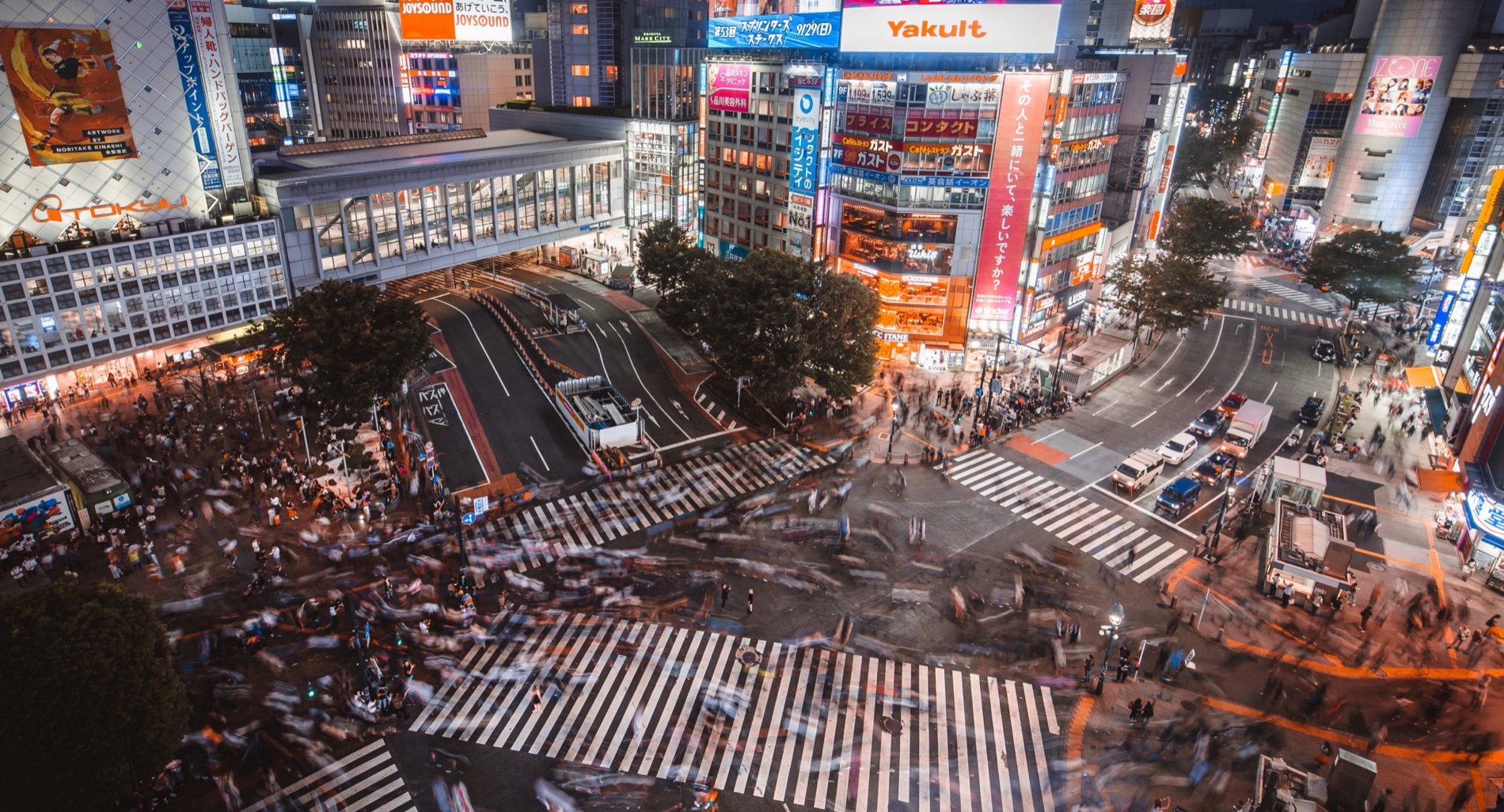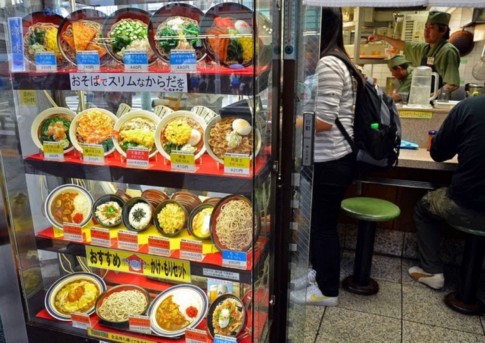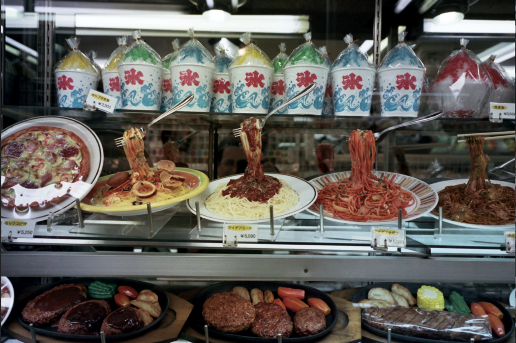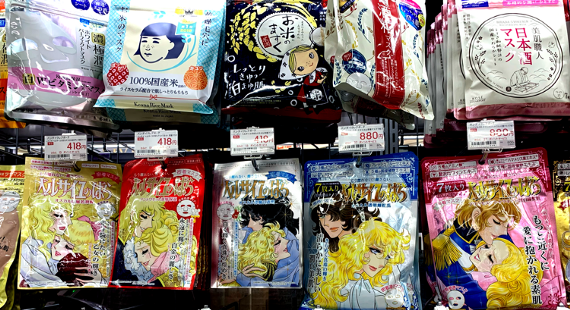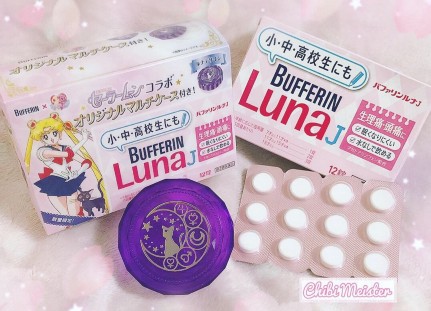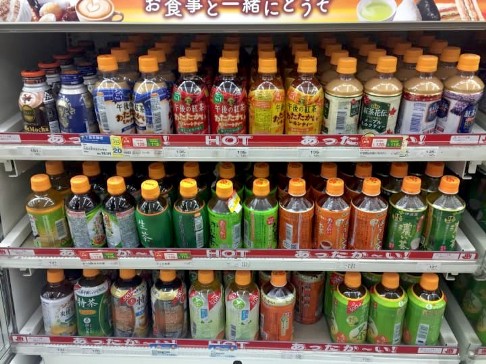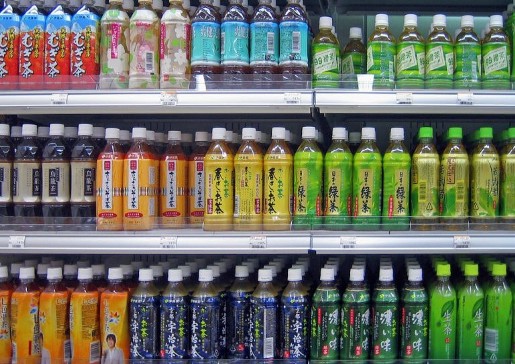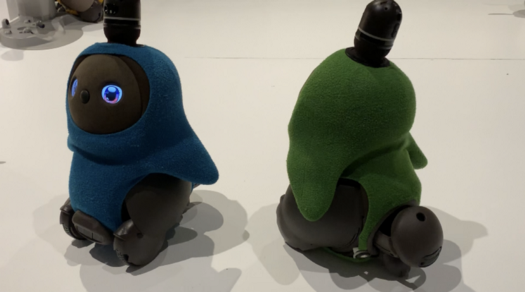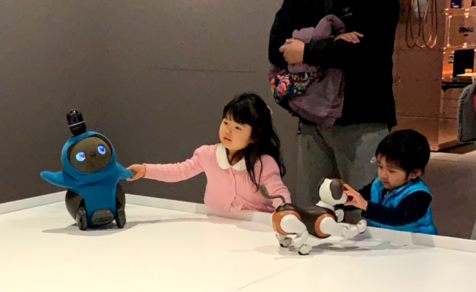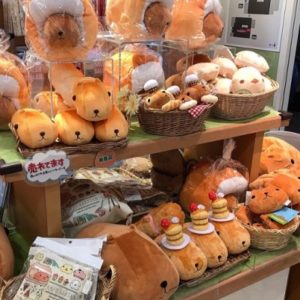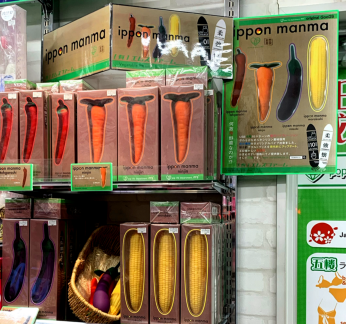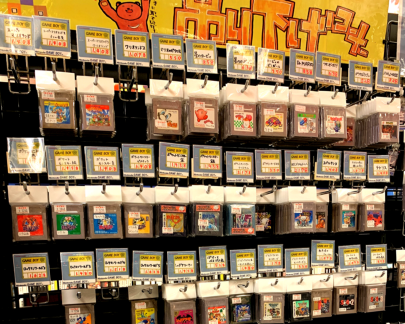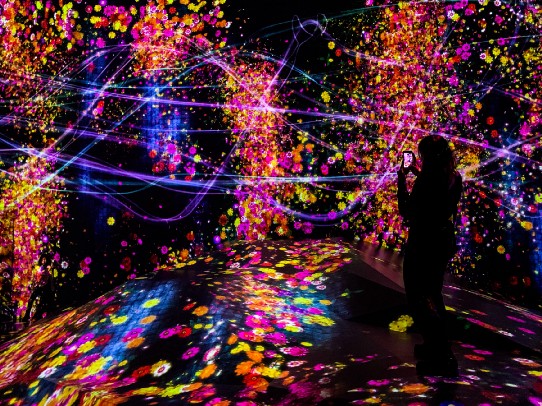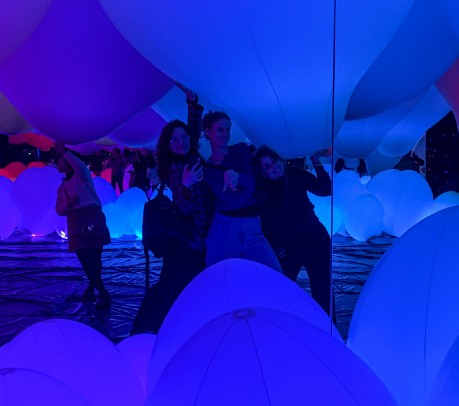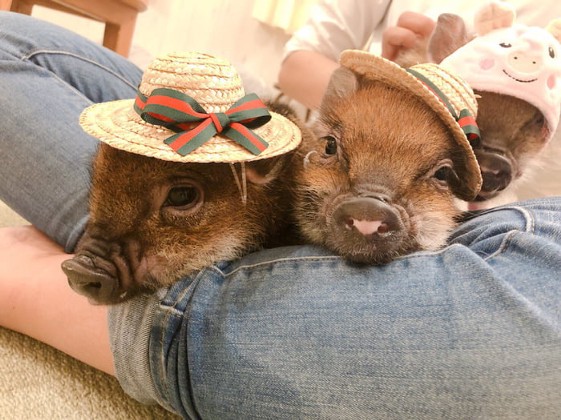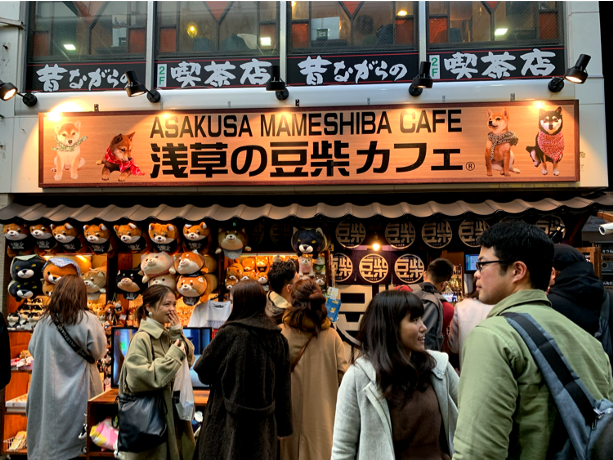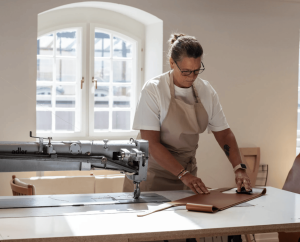Design Matters is a multinational team. As such, we constantly come across people from all over the world through the work we do, and we all love travelling and experiencing new cultures. Despite this, we found ourselves roaming the streets of Tokyo in bewilderment, awe, and excitement.
So what was it that we were so struck by?
DESIGN
Japan’s Packaging “Fetish”
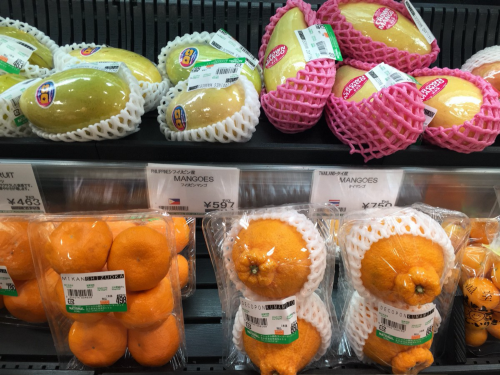
Tokyo does not seem to have caught on to the recycling revolution: everything is wrapped in and made of plastic. We went shopping and in no time we found ourselves holding a thousand bags for very few items.
When one of us bought a stuffed toy and the clerk asked her whether she wanted it to be wrapped as present, little did we know that saying “yes” would mean having the poor toy be wrapped in paper, then in a plastic bag, and then in a small sealed plastic bag, and finally in a larger plastic bag. Food is also over-wrapped, even apples are individually covered in plastic!
Spell Check Isn’t A Priority
We noticed that sometimes, meanings get…lost in translation; the Japanese sometimes have their own take on posters and karaoke lyrics, like these examples we spotted.

Most Umbrellas Are Transparent
Transparent umbrellas are everywhere. We don’t know if it’s a trend or if, more likely, they’re simply cheap and allow the person who holds them to see through them.

Shoes Made In Japan Come in S-M-L Sizes
We went shopping around different ares in Tokyo, from the hipster Cat Street in Shibuya, to the peculiar Takeshita Street in Shinjuku. We were pleasantly surprised by the amount of second hand shops! But one thing puzzled us: the shoes produced in Japan only come in size S, M, L, which makes it really hard to find shoes that fit. Maybe that explains why we saw quite a few people dragging their feet in “clown”-like shoes?
Plastic Food Samples
If plastic use wasn’t already very consistent in Japan, realistic plastic models of food were displayed by the entrance of about every eatery. These “food samples” — shokuhin sanpuru 食品サンプル in Japanese — serve to give potential customers an idea of the dishes served in the restaurant. It was surely something that we aren’t used to seeing in Europe!
The Fascinating World Of Socks
If you haven’t been to Japan, you might not think that socks could come in so many shapes, colors, and varieties. Tabi are socks with a split toe design to wear with Jika-Tabi, Japanese footwear that is also split between the toes. If one toe split is good, five is surely better! In fact, it’s quite common to see five-toed socks, which are basically gloves for your feet. Screen printed and character socks are everywhere and come in an infinite variety of themes.
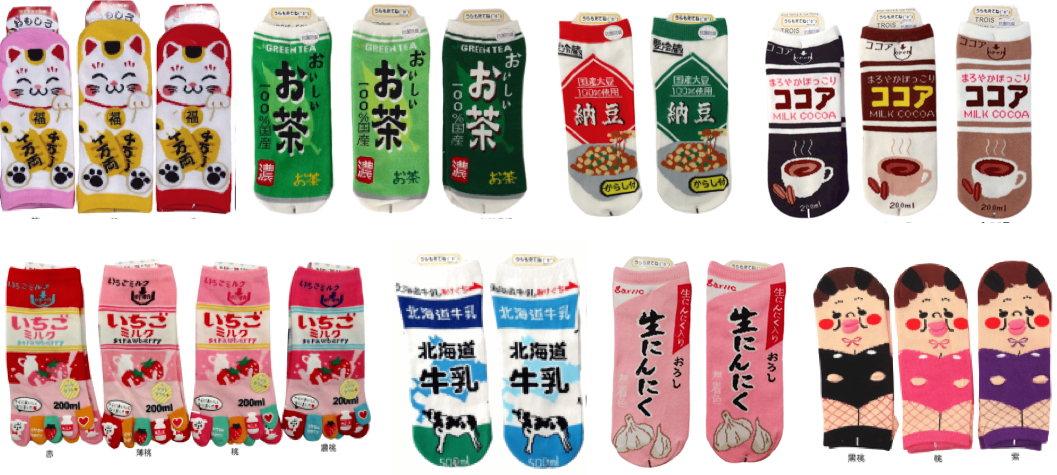
Gachapon
The term Gachapon derives from the onomatopaeic “gacha” — the hand-cranking action of a toy-vending machine — and “pon” — the toy capsule landing in the collection tray . The term indicates both the vending machines and the little capsule toys coming out of them. Gachapon machines are coin-operated, usually found outside supermarkets and shops. The toys, which cost between ¥100–500 (US $1–5), are released in sets, so each series has a number of figures to collect.
They are often popular characters of manga, video games , or the entertainment industry. But it isn’t uncommon to find sexy female figurines, animals, objects like washing or sewing machines, or the weirdest thing you can think of. We were really surprised to see so many adult collectors in Tokyo!

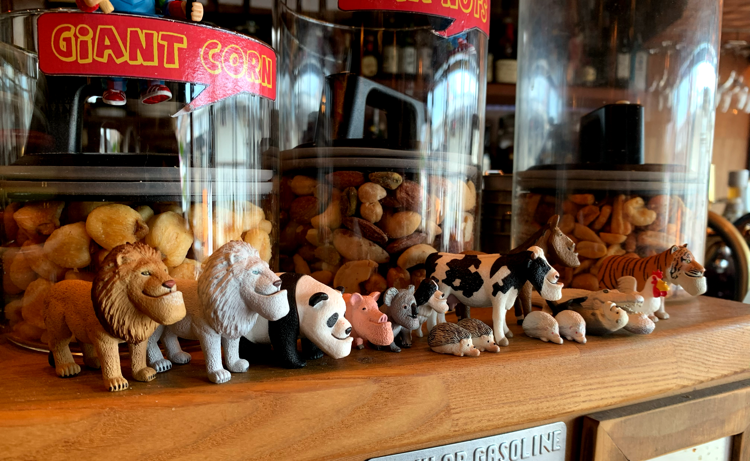
Product Design — Medicines and Beauty Products
We didn’t seem to find minimalism in the product design of cosmetics and medicine packages. Kawaii seems to pervade everything, making packaging eye-catching and cute, yet quite overwhelming.
Product Design — Food and Beverage Packaging
It didn’t take long before we entered a Japanese convenience store (conbini in Japanese). The options seem infinite: for each type of product there are so many variants that it’s almost impossible to make a choice… if you can read Japanese! Luckily, a member of our team can speak Japanese and could help the rest of the group with translation, making sure that the filling of that stuffed bun on the shelf was really meat and not azuki beans.
Even choosing a bottle of tea becomes a challenge. Which one are you going to pick? This brand? That brand? The cold one? The hot one? The one with milk? The flavored one? Green tea? Oolong tea? Hōji tea?
Robots
We all know that Japan is famous for producing and loving robots. We found some very adorable ones at the MORI Art Museum! Every visitor could interact and play with them. Some resembled dogs and some — our very favorite — looked like cuddly, squishy penguins. These cute penguin robots would waddle towards you flapping their wings and making a squeaky sound, looking for cuddles. And they would even follow you with their eyes!
Kyarakutā (Character) Merch
We almost got lost in the huge shopping mall connected to Tokyo Station. But that was only a blessing in disguise, as we discovered an entire “street” inside the shopping mall, called Tokyo Character Street, where an endless series of kyarakutā shops were lined up one after the other. Each shop sells merchandise that is dedicated to one or more characters of the Japanese pop culture. In these shops one can find stuffed toys of the character, character-themed mugs, towels, stationery, socks, key rings and much more. The characters one can find are Totoro, Hello Kitty, Pokemon, Sumikku Gurashi, Domo and the other NHK characters, Gudetama, etc, the list is infinite.
NATURE VS HUMANS
Tangled Overhead Power Lines
We noticed an abundance ofoverhead power lines across all the streets in Tokyo. Unfortunately, they are not very aesthetic, but they come in handy if an earthquake or a flood occurs. It’s indeed easier to restore power if cables aren’t subterranean.
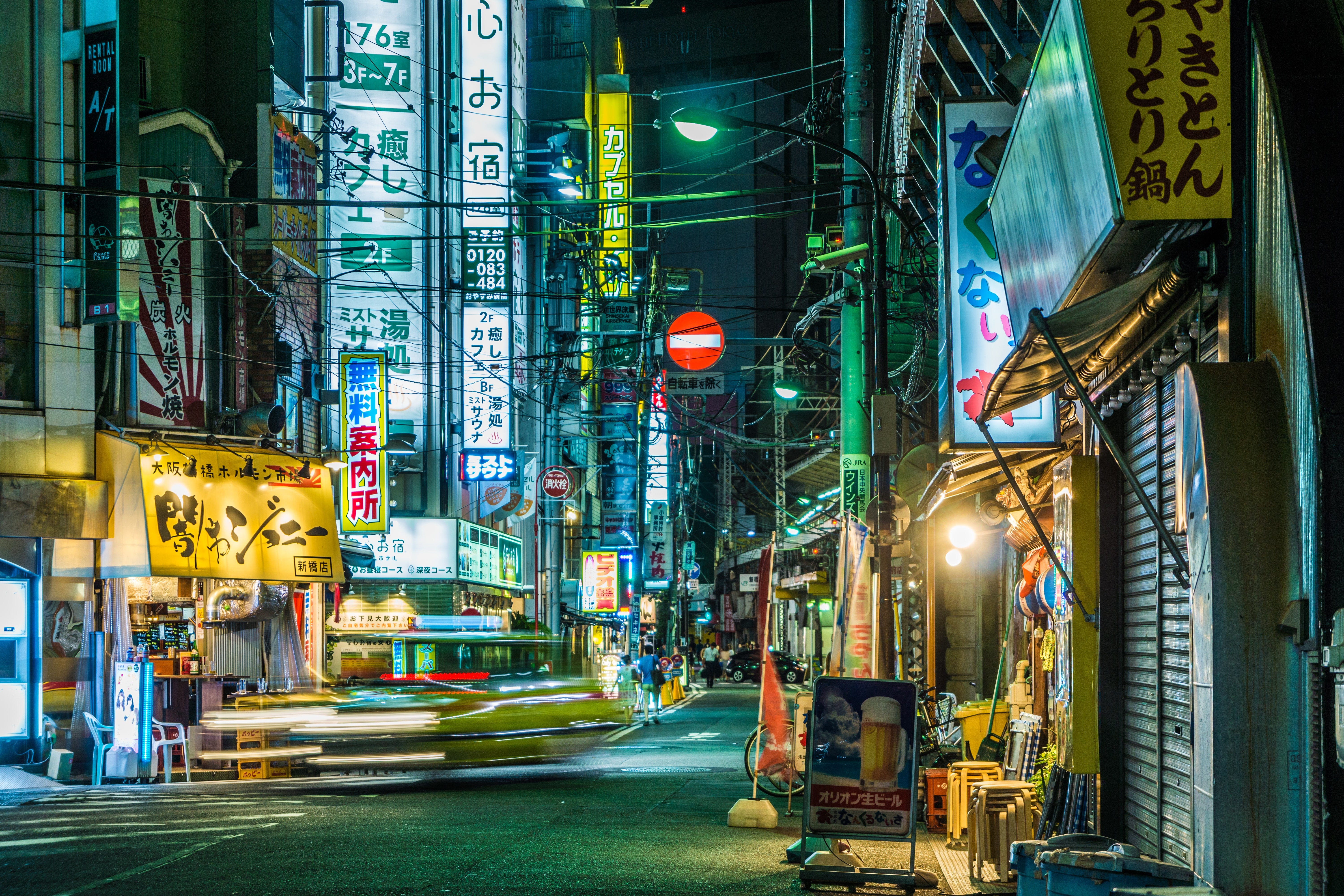
Smartphones Notify You Before An Earthquake
It was Friday 31st of January, around 2 am, some of us were out in Shibuya celebrating the end of Design Matters Tokyo, while some others were in their rooms to finally get some sleep. Our phones started to make a weird noise, as if an alarm had gone off. It was an Earthquake Early Warning (EEW) (緊急地震速報, Kinkyū Jishin Sokuhō), a notification that warns you that an earthquake of 5 or higher on the Japan seismic scale (JMA or Shindō) is about to come. Each warning is issued by the Japan Meteorological Agency (JMA) and is communicated through radio.

Shortly after receiving the notification, the furniture and windows of the hotel room started to creak and the clothes hanging around the room started to swing back and forth.
A member of the Design Matters team was at a party and had gone to the toilet. She didn’t have her phone on her, and sitting there, thought that the vibrations were caused by the neighbours tromping across the upper floor!
CULTURE
Capsule Hotels
We decided to stay at a capsule hotel for a few nights to experience what it’s like to sleep in a pod. Capsule hotels are incredibly compact, yet functional rooms for travellers, usually on a budget. The hotel we chose (The Millennials) was very modern and more spacious than many other pod hotels.
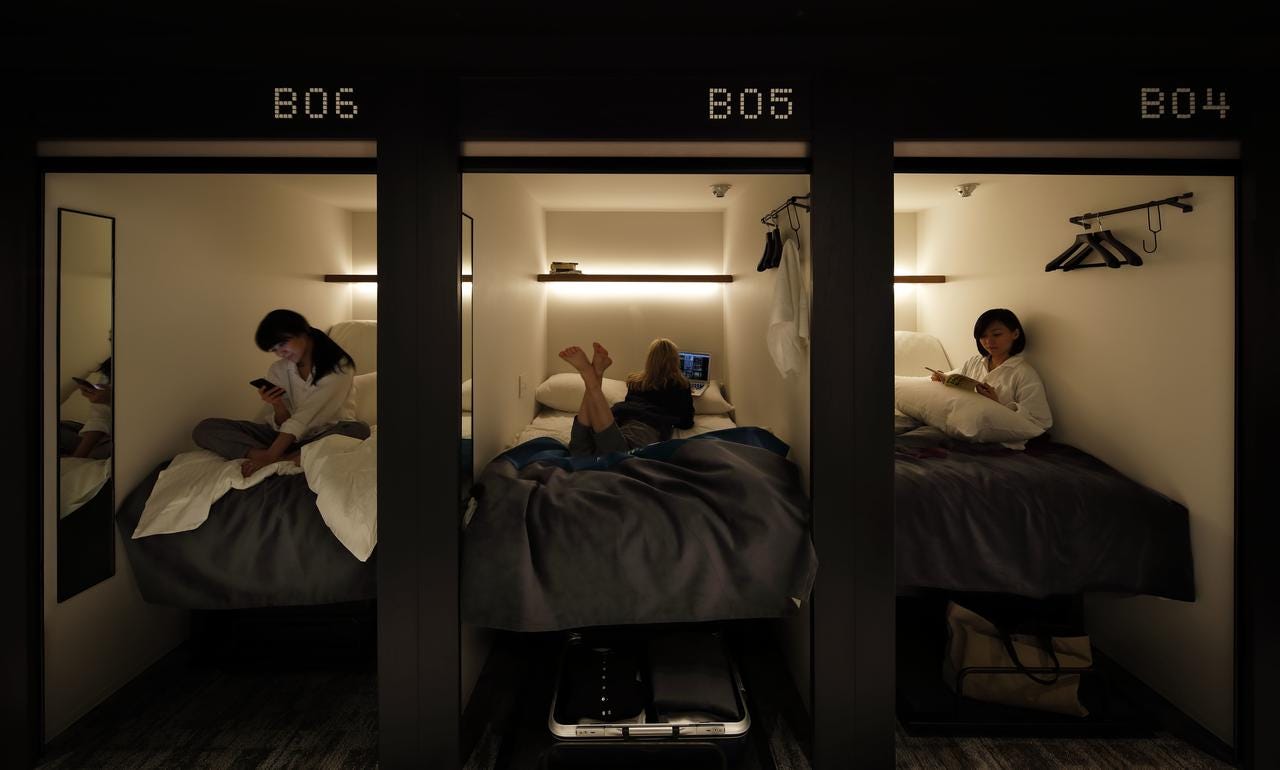
The pods we were in were big enough to crawl and sit up on the bed. With an Ipod we could raise and lower the adjustable bed at the head level, turn on and off or dim the lights, and access different areas of the hotel. Air conditioning and power sockets were provided, as well as a shelf, a mirror, and some storage room for a suitcase under the bed. The open end of each capsule could be closed with a curtain, and each floor was either male only or female only. We found this experience very unique and different, since we were forced to use spaces in a very efficient way and to have relative privacy, since the only divide between you and other people was a curtain. But despite this, our experience was very enjoyable.
Love Hotels
For an entirely different place to stay, love hotels are designed specifically for sexual encounters. Surprisingly, they are unashamedly located around the city, with huge entrance signs surrounded by neon lights, sometimes taking the entire building.
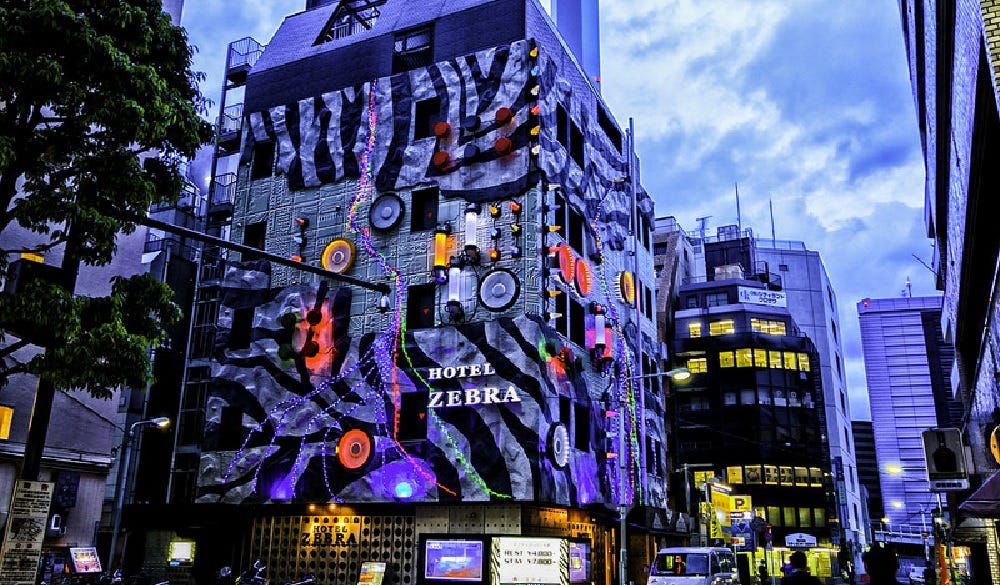
The first love hotels started up between the late 50s and early 60s. At that time, the sleeping areas inside Japanese homes would usually become living areas during the day, not leaving much space for privacy. Starting from the 70s, the most peculiar and flamboyant decorations of love hotels were forced inside by the police. This is why some love hotels have exteriors that blend in with the rest of Tokyo.
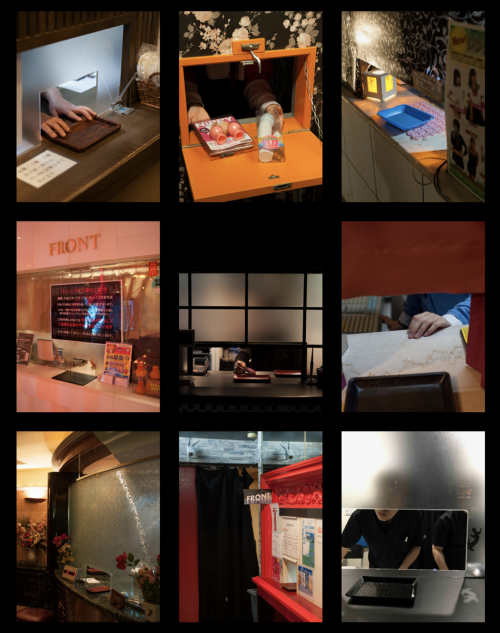
Today, most of them are easily identifiable, thanks to their kitschy façades, neon colors and flashy lights. But because discretion, privacy, and anonymity are so important in a love hotel, customers can only make cash-only transactions through automated machines or with clerks sat behind opaque screens. There are more than 35.000 love hotels in Japan, making them so popular that they even have an emoji ?. Each love hotel has a different style, and sometimes each room has a specific theme. We’ll let you do your own research!
Sensory Overload
Akihabara is a whole neighbourhood dedicated to game and video game nerds. Whilst getting lost, you are constantly bombarded with lights, signs, and sounds. Considering the Japanese philosophy of simplicity and minimalism, this place seemed to be a living juxtaposition.
We visited Super Potato, a multifloor video game store known for its rich collection of retro games. We also ended up in an adult-only store selling some rather unique items.
The noise isn’t only visual; the sounds coming from shops, speakers, large screens, machines, and yelling clerks pervade the streets. Not only in Akihabara, but in most shopping areas like Shibuya and Shinjuku.
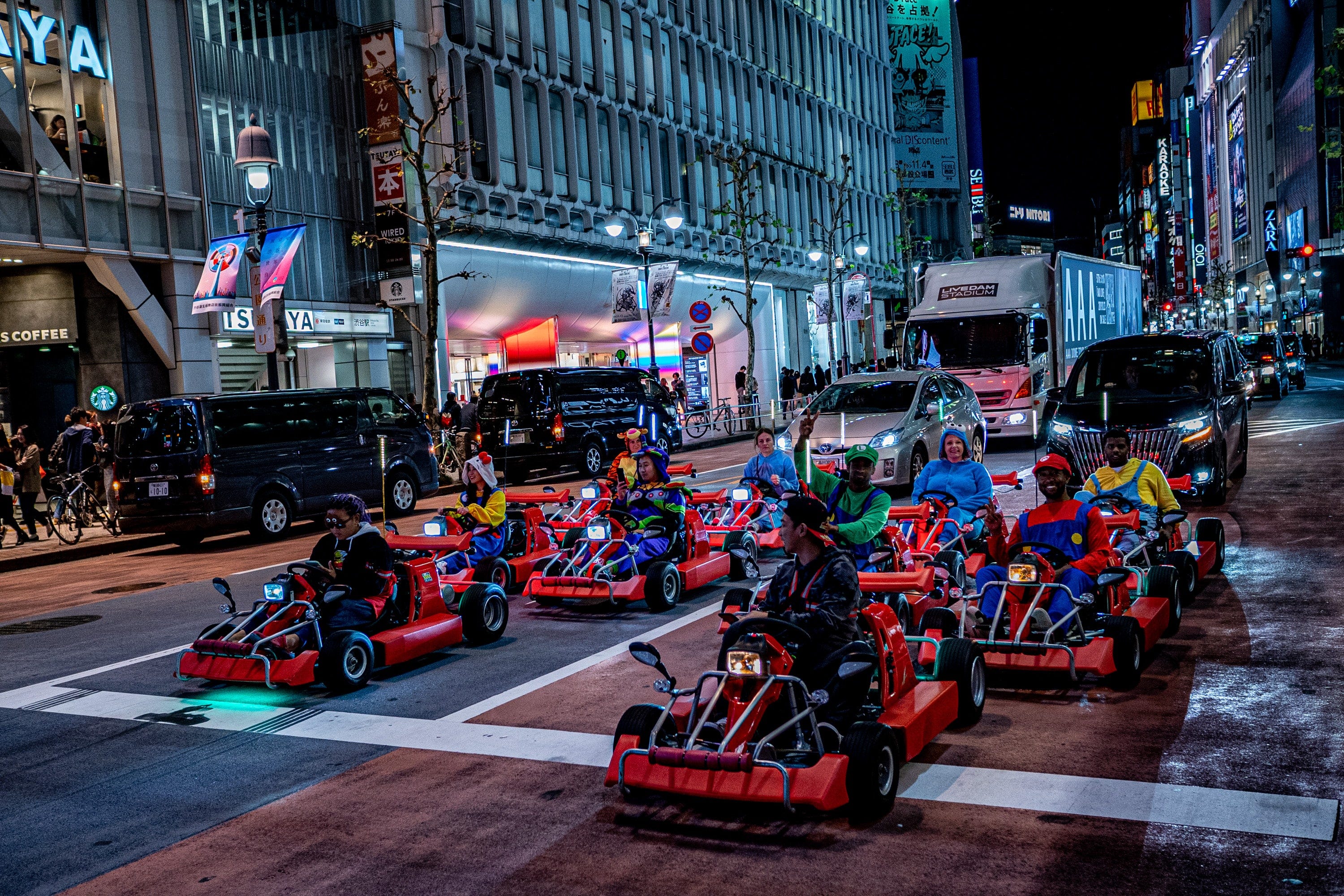
Another thing we noticed is that even toilets and showers ‘speak’! Not only do Japanese toilets abund in buttons, they also have a special feature that produces a flushing sound. A shower that one of us tried would “talk” every time the temperature of the water was changed. Also, the space for a bathroom seems to overpower other areas in the house — in some examples we visited, there were three separate rooms: one with the toilet, the ofuro (the room with bathtub/shower), and one with the remaining facilies of a bathroom, like a sink.
Art And Games
Art differs from what we are used to in the West: intriguing posters and stickers are plastered around every nook and cranny in the city.

We discovered that interactiveness plays a much bigger role than expected. When working at co-lab — a coworking space located in Shibuya — we found a room with plenty of interactive games open to anybody who had access to the co-working space. Needless to say that we loved it!

We were struck by the beauty of the interactive art exhibition teamLab Borderless too. The experience was incredibly immersive, not simply interactive!
Crazy about Pets
Pet fashion reaches a new level in Tokyo! Many shops sell clothes, hats, and other fashion items specifically designed for pets. Animal cafes are numerous and host a variety of animals; Shiba dog cafés and cat cafés are the most popular ones, but there are also pig cafés, owl cafés, hedgehog cafés and so on. We chose not to go to any pet café, as we were a bit concerned about the animals’ welfare, but they are surely loved in Tokyo.
Another type of shop we didn’t know about, before arriving in Tokyo, is “cuddling shops”, which exist for people to interact with pets who spend the rest of their time in cages or enclosures, waiting for the next customer to pick them up.
UNCATEGORIZABLE
Karaoke “potion”
Drink found at a Karoke Bar in Shibuya, the label says “karaoke voice drink”. We didn’t try it, but we are sure it does wonders!

Speech Bubbles On People
Every time people would cross the street a camera would record them and show them on a huge screen with cute stickers and speech bubbles around. It wasn’t really a video game, but it weirdly felt like it.
